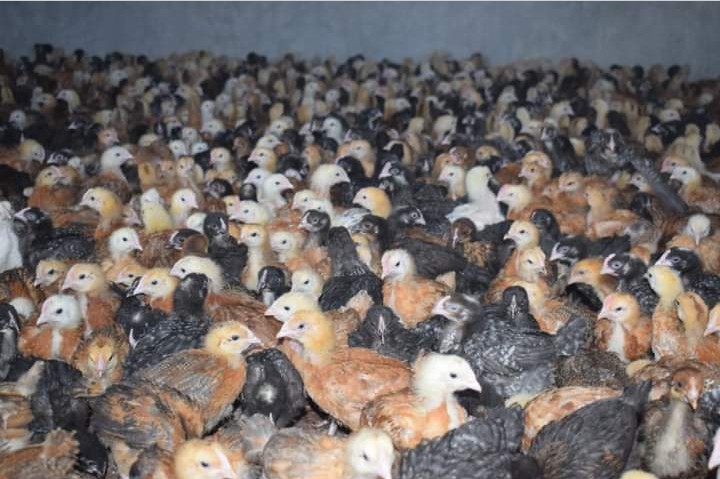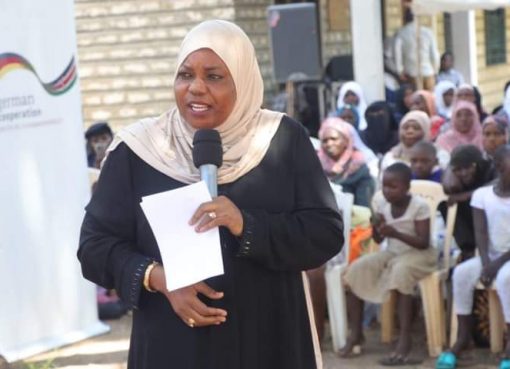The Nakuru County Government has distributed 73,000 chicks to poultry farmers through its Economic Stimulus Program (ESP), meant to raise income levels at the grassroots.
The Sh25 million poultry project targets women, youth groups and persons living with disabilities across the 11 sub-counties and aims at unlocking the Sh10 billion potential in the sub-sector within the devolved unit.
The one-month-old chicks were distributed to families after beneficiaries were educated on proper feeding and diseases that may affect productivity.
Acting County Executive Committee (CEC) Member for Agriculture, Livestock and Fisheries Engineer Festus Ng’eno said poultry-keeping had significant potential to improve the income and nutrition for families in rural areas.
“Up to now we have given out 73,000 chicks and we will give more. The chicks are from the Improved Kienyeji breed. We have a free vaccination program to guard against Newcastle disease and others. We do not want any chick to die,” Ng’eno said.
According to the CEC Kienyeji chicken attain maturity rate faster, that is, between five to six months and they start laying eggs immediately. He said that there is a ready market for poultry products and added that when one does value-addition on their products, the proceeds are high.
He further said the administration will support the farmers to get profits from the project.
As a long-term strategy, the county is working with research institutions including Kenya Agricultural and Livestock Research Organization (KALRO) and Egerton University who are helping in hatching chicks and brood them before giving them out to the farmers.
To ensure that the smallholder farmer realizes optimum production, the county government has attached a veterinary and a livestock extension officer to the project who are equipping the breeders with necessary technical advice such as how to feed the birds and administer vaccines.
“We want Nakuru residents to venture into poultry farming for commercial purposes and sustain the market demands of eggs and meat from improved ‘Kienyeji’ chicken. We want to increase productivity and stop unscrupulous businessmen from selling imported eggs from neighbouring countries,” Engineer Ng’eno said.
Imported eggs from neighbouring countries have flooded the market which is making those in poultry farming make losses said the county official.
The CEC said 110 cooperative societies had received 96 automatic chicken incubators and backup generators valued at Sh6.8 million, while in Bahati Sub-County 6 poultry farmers’ cooperatives had each received a 3,200-egg capacity incubator to boost their operations.
“We want to sustain the programme through vaccination and good husbandry. We also have given out to farmer groups more than 100 incubators with capacity to produce over 1,000 chicks per month. That means every single month we will be hatching over 100,000 chicks for distribution,” Ng’eno observed
The CEC added that officers have been monitoring how the beneficiaries handle the poultry, to ensure its success.
“The challenges we face is high mortality rates among the chicks, especially during the months of August, September, October and older chicken in February and March because of dust. It was because of the death rates that we bought Newcastle vaccine,” Mr Ng’eno explained
He said farmers are expected to use the dual-purpose breeds to improve their local chicken in addition to increasing their production. This he noted will address challenges of poor breeds, low production while generating income for the communities.
“The project also aims at promoting urban agriculture while ensuring the use of limited available space to feed the growing population in urban centers. Our ultimate goal is to achieve food security and nutrition as well as create employment,” the CEC said.
Statistics from the Ministry of Agriculture indicate that Kenya has an estimated poultry population of 31 million birds. Out of these, 75 per cent consist of indigenous chicken, 22 percent of broilers and layers and one per cent of breeding stock. The traditional chicken is mostly kept in rural areas while layers and broilers are mainly reared in the urban areas
Records from County Department of Agriculture, Livestock and Fisheries indicate that Nakuru now has approximately 1.5 million indigenous chickens, 100,300 improved Kienyeji breeds, 212,200 layers, 275,900 broilers, 44,000 turkeys, 73,000 ducks and 14,500 geese.
“The County is exploring the possibility of intensifying poultry vaccination in order to cushion small-scale farmers against the high vaccination costs as well as the high disease outbreaks,” stated the CEC.
By Charloth Chepkemoi





